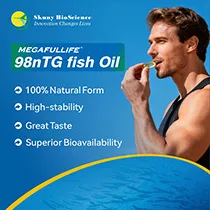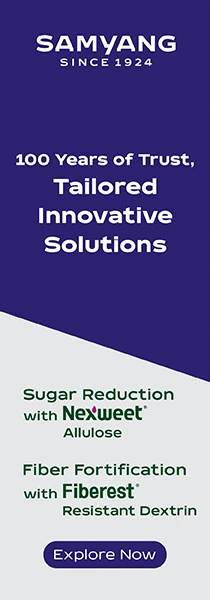Chilean astaxanthin producer to highlight “purity of provenance” in algae product launch

21 Aug 2019 --- Chilean biotech corporation Atacama Bio Natural Products, a producer of astaxanthin products from the Haematococcus pluvialis algae, will launch a new product, NatAxtinTM at Vitafoods Asia in Singapore next month (September 25-26). NatAxtinTM is sourced microalgae that has grown through processes that imitate natural ecological systems, known as biomimicry. The Chilean company underscores the low environmental impact of its production systems, which are said to deliver a highly sustainable yield.
Driven by consumer demand for health and wellness products, astaxanthin has gained popularity in the European and Asian markets in recent years. According to research, it offers the a reduction in oxidative stress, in addition to helping boost cellular energy production by effectively protecting the membrane system of mitochondria. Moreover, the algae extract has also been found to be efficacious in treating eye fatigue and in improving muscle function in elderly sarcopenia patients.
Ahead of its product launch, Atacama Bio Natural Products underscores the importance of informing consumers about the origins of a particular product. “Provenance matters as consumers care how pure or pristine the environment in which algae, or other natural products that we consume, are grown. They educate themselves about provenance. For example, Chinese consumers prefer products from Australia or New Zealand because they trust the provenance.”
“The origin of astaxanthin matters. The more natural the production process, the less intervention required, yields a product that is closer to that which nature produces,” the company adds.
“Provenance matters”
Atacama Bio Natural Products notes it is technologically demanding to produce a quality astaxanthin product at an industrial scale over time, because Haematococcus pluvialis is a natural-occurring organism that thrives in ponds and in places that have no environmental contamination. Additionally, such algae only start producing astaxanthin under particular stress conditions, mainly intense sunlight.
To manufacture astaxanthin, the culturing process must imitate intense light conditions either through access to such conditions (taking advantage of Chile’s high solar radiation, clear skies, and pure underground water from the Andes), by fabricating them using artificial light or by encapsulating the algae in tubes.
The Atacama Desert in Chile is described as a “unique and privileged place” that has the optimal natural conditions to culture Haematococcus pluvialis, the original source of natural astaxanthin. Atacama Bio Natural Products uses a raceway photobioreactors production system, which takes advantage of the geographical and climatological conditions in the Atacama Desert. The method is touted as sustainable, consumes little energy (as it uses solar energy) and closely resembles the way that nature intended for Haematococcus pluvialis to grow.
Algae create biomass by absorbing carbon dioxide directly from the atmosphere while delivering oxygen, thus contributing to a reduced carbon footprint. The facilities in which the algae are grown are fed by pure underground water that filters directly from the peaks of the Andes Mountain Range. This production process creates an essentially natural astaxanthin product. Because Atacama Bio Natural Products takes advantage of topological conditions, the company notes that this lowers the overall cost of production.
Astaxanthin product launches
A rise in research-backed claims highlighting the benefits of astaxanthin is driving consumer interest in the algae extract. Innova Market Insights highlights a 29 percent growth of new product launches tracked with “astaxanthin” in Europe, and a 4 percent annual rise in the US (CAGR 2012-2017).
In June, US-based Valensa International released a new powdered, water-soluble and flavorless astaxanthin ingredient, coined Zanthin Natural Astaxanthin. The move widens the potential applications that the antioxidant could be used in to include natural food and beverage applications, notes the company. The new ingredient preserves its nutritional profile while increasing overall bioavailability, allowing the body to absorb a high percentage of astaxanthin.
Last April, Israel-based microalgae ingredient specialist AlgaTechnologies (Algatech) also headlined the newest product within its astaxanthin product line – AstaPure EyeQ – a microencapsulated, cold water-soluble, 2 percent astaxanthin powder, marketed as promoting superior vision functionalities. According to the manufacturer, the extract may be applicable as a functional ingredient in supplements, foods and beverages. AstaPure EyeQ was unveiled at Vitafoods Europe 2019 (7-9 May).
In February, Algatechnologies launched AstaPure Arava, an all-natural, algae complex that contains naturally occurring constituents of the Haematococcus Pluvialis algae. The company claims that this species of microalgae is the richest known source of astaxanthin” and its properties are supported by research from NIS Labs, a research institute based in the US. Led by Dr. Gitte Jensen, the research has shown that Arava algae powder is highly potent and has the synergistic effects of natural astaxanthin and the whole-algae complex.
By Benjamin Ferrer












